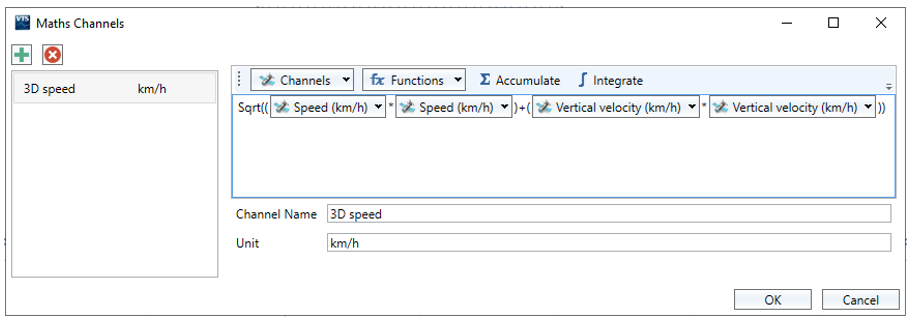3D Speed & IMU KF
Speed
As described in our Channel Definitions, the standard Speed channel logged by VBOX data loggers is Doppler-derived and comes directly from the GNSS engine. This is 2D speed, which has no direction and is not corrected for pitch.
If you have enabled IMU integration, the Speed is filtered with the Kalman Filter to produce a less noisy channel. This does not, however, correct the Speed channel for the pitch of the vehicle. This is also lever arm compensated to eliminate the effect of body movement on the roof-mounted measurement location of the GNSS antenna.
The IMU unit measures the x, y, and z acceleration via three accelerometers. If the vehicle is sitting on a slope, then an accelerometer is already engaged and measuring this direction, even before the vehicle moves.
As the vehicle moves, the IMU can use its measurements, along with the GNSS data, to internally compensate for the differences in attitude. As such, the acceleration measured by the IMU (used in the calculation of speed) and the GNSS Speed are measured on the same plane.
Vertical Velocity
The Vertical Velocity channel is also a Doppler-derived channel but it does have a direction associated – the value will be signed positive during ascent and negative during descent.
When the IMU integration is enabled, Vertical Velocity is also filtered by the Kalman Filter to reduce noise.
Calculating 3D Speed
Where 3D Speed is required, the channel can be calculated using the Speed and Vertical Velocity channels, where:
3D Speed = Sqrt (Speed²+Vertical Velocity²).
This can be calculated automatically from a data file in the VBOX Test Suite software by creating a Maths Channel.

In many testing scenarios, the 3D speed may be unnecessary due to the small difference between the GNSS produced Speed and the calculated 3D Speed.
For example, if we know we were travelling at 30 km/h down a slope with a 10% incline, we can calculate what the difference is between the 2D and 3D speed values.
For this, we need to know the angle of the incline, which can be calculated from the % value:
Arctan(10/100) = 5.7°
With this angle and the Speed value we can then calculate the 3D speed:
3D Speed = 2D Speed ÷ Cos(angle).
3D speed = 30 km/h ÷ Cos(5.7°)
3D Speed = 30.15 km/h
The difference between our GNSS 2D Speed and the calculated 3D Speed is 0.15 km/h (approximately a 0.5% difference).
